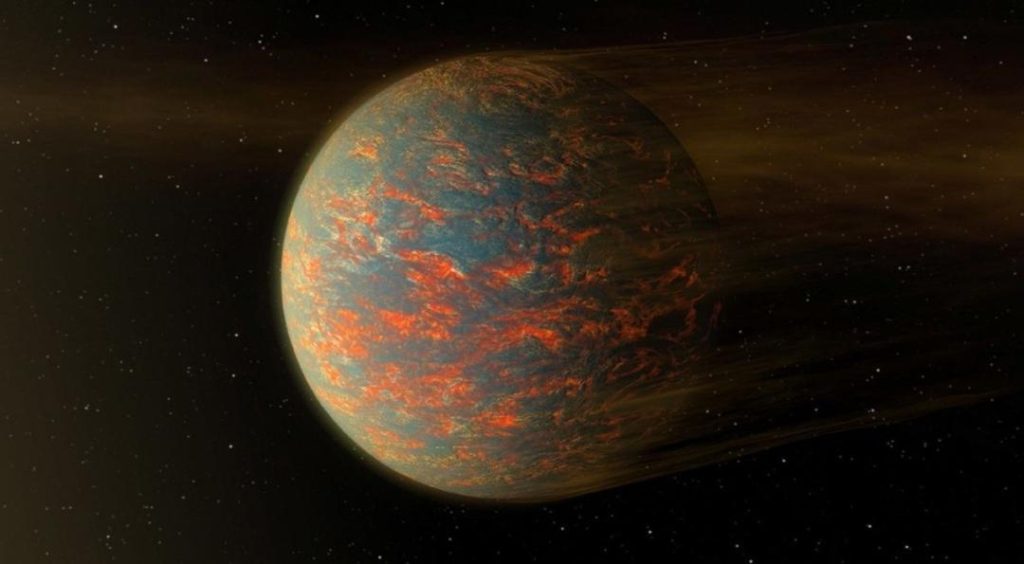
Newly-Discovered Super-Earth Heats Up & Freezes Every 300 Days
The search for extraterrestrial life has led scientists to some fascinating discoveries in recent years. One of the most intriguing finds is a newly-discovered super-Earth that orbits a Sun-like star 20 light-years from Earth. This remarkable planet, named K2-141b, has a peculiar habit of experiencing extreme heat for the first part of its year and freezing for the rest of the days, bouncing between extreme climates roughly every 300 days.
A super-Earth is a planet that is bigger than our own Earth but lighter than the gas giants Neptune and Uranus. K2-141b, discovered by NASA’s Kepler space telescope, is a prime example of this category. Its unique orbit, shaped like an oval, is responsible for the extreme temperature fluctuations it experiences.
The Discovery
K2-141b was discovered using the K2 mission, a space-based observatory launched in 2009. The mission aimed to detect exoplanets, or planets outside our solar system, using the transit method. By measuring the decrease in brightness of a star as a planet passes in front of it, scientists can determine the size and orbit of the planet.
In the case of K2-141b, the planet’s close proximity to its star, known as K2-141, allows it to heat up significantly during its orbit. As it approaches the star, the planet’s surface temperature can reach as high as 3,000 degrees Fahrenheit (1,649 degrees Celsius), making it a scorching hot environment. However, as it moves away from the star, the temperature drops to a frigid -400 degrees Fahrenheit (-240 degrees Celsius), making it a frozen wasteland.
The Implications
The discovery of K2-141b raises several questions about the potential for life on this planet. While the extreme temperature fluctuations might seem inhospitable to life as we know it, there are some interesting possibilities. For example, the planet’s unique environment could support life forms that are adapted to these conditions. Scientists have discovered microorganisms on Earth that can survive in extreme temperatures, such as hot springs and Antarctic ice sheets.
Additionally, the planet’s proximity to its star could provide a unique opportunity for life to thrive. The constant flux of energy from the star could support a diverse range of ecosystems, even if the planet’s surface temperature is extreme.
A Window into the Formation of Planets
The discovery of K2-141b also provides scientists with a window into the formation of planets. The planet’s unique orbit and temperature fluctuations can help researchers understand how planets form and evolve over time.
Studying the formation of planets like K2-141b can provide valuable insights into the conditions necessary for life to emerge. By understanding how planets form and evolve, scientists can better understand the probability of finding life elsewhere in the universe.
Conclusion
The discovery of K2-141b, a newly-discovered super-Earth that heats up and freezes every 300 days, is a fascinating find that opens up new possibilities for the search for extraterrestrial life. The planet’s unique environment and orbit provide a fascinating case study for scientists, allowing them to explore the potential for life on this extreme planet.
As we continue to explore the universe and discover new worlds, we may find that the conditions necessary for life are more common than we previously thought. The discovery of K2-141b serves as a reminder that the search for extraterrestrial life is an ongoing and exciting field of research, with new breakthroughs and discoveries waiting to be made.
Source:






